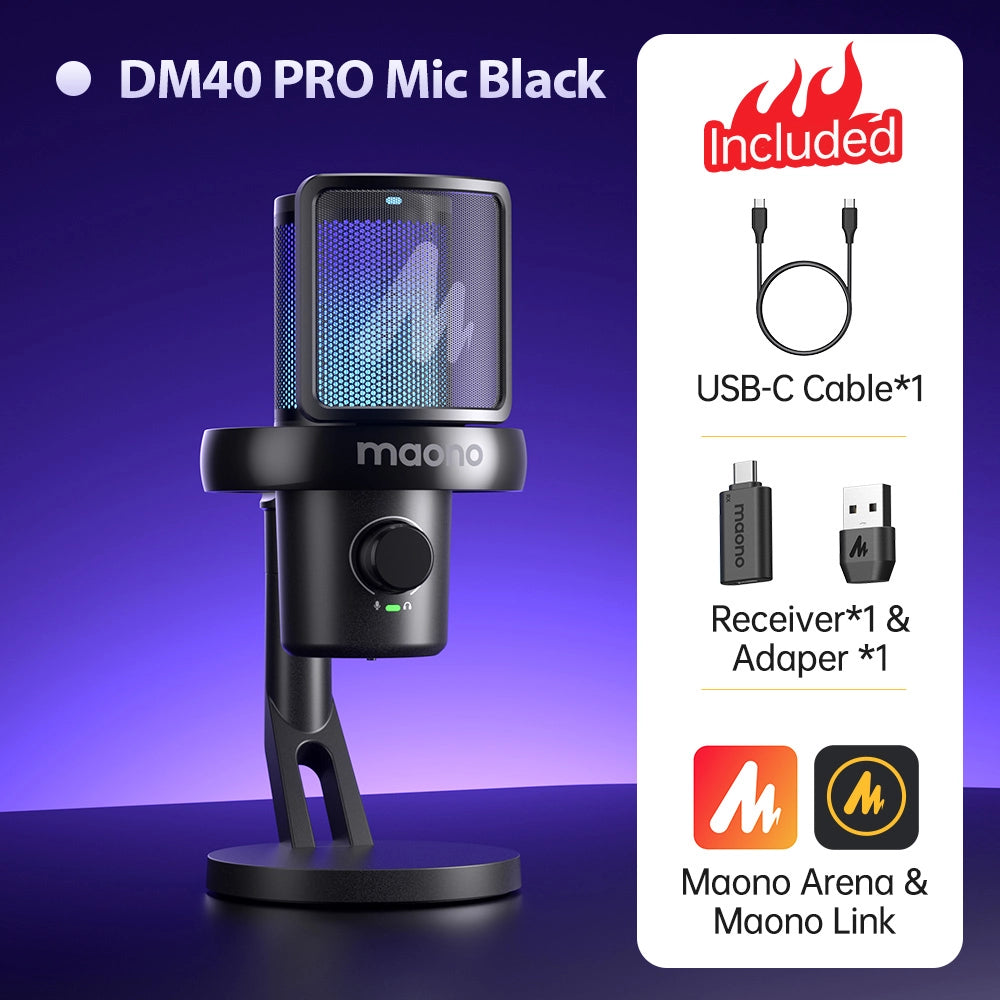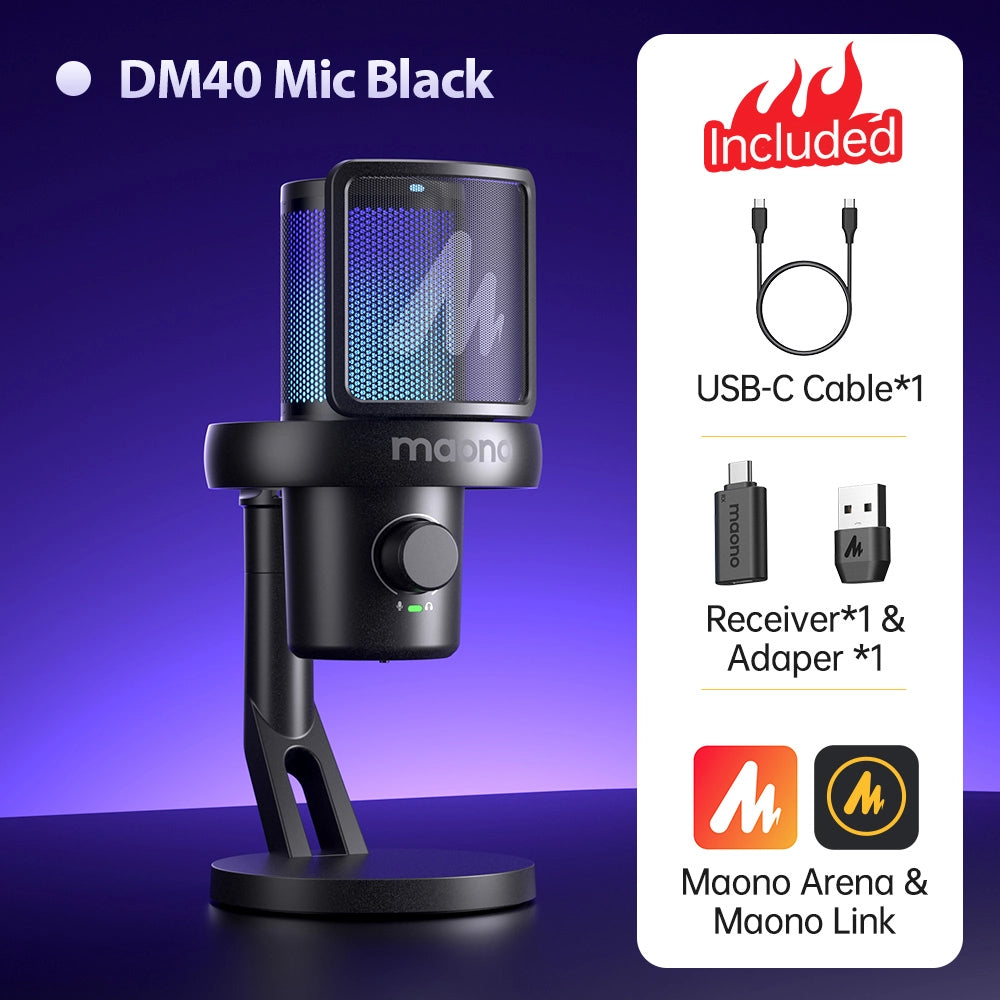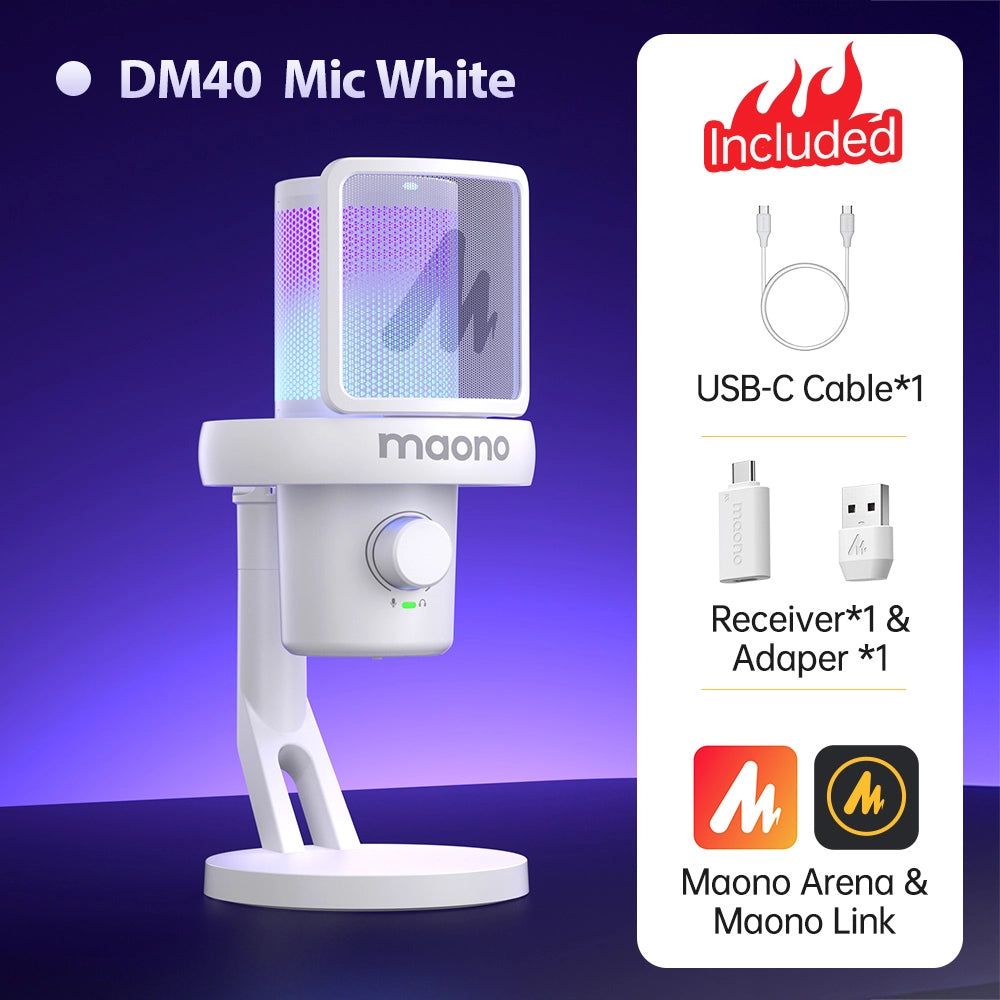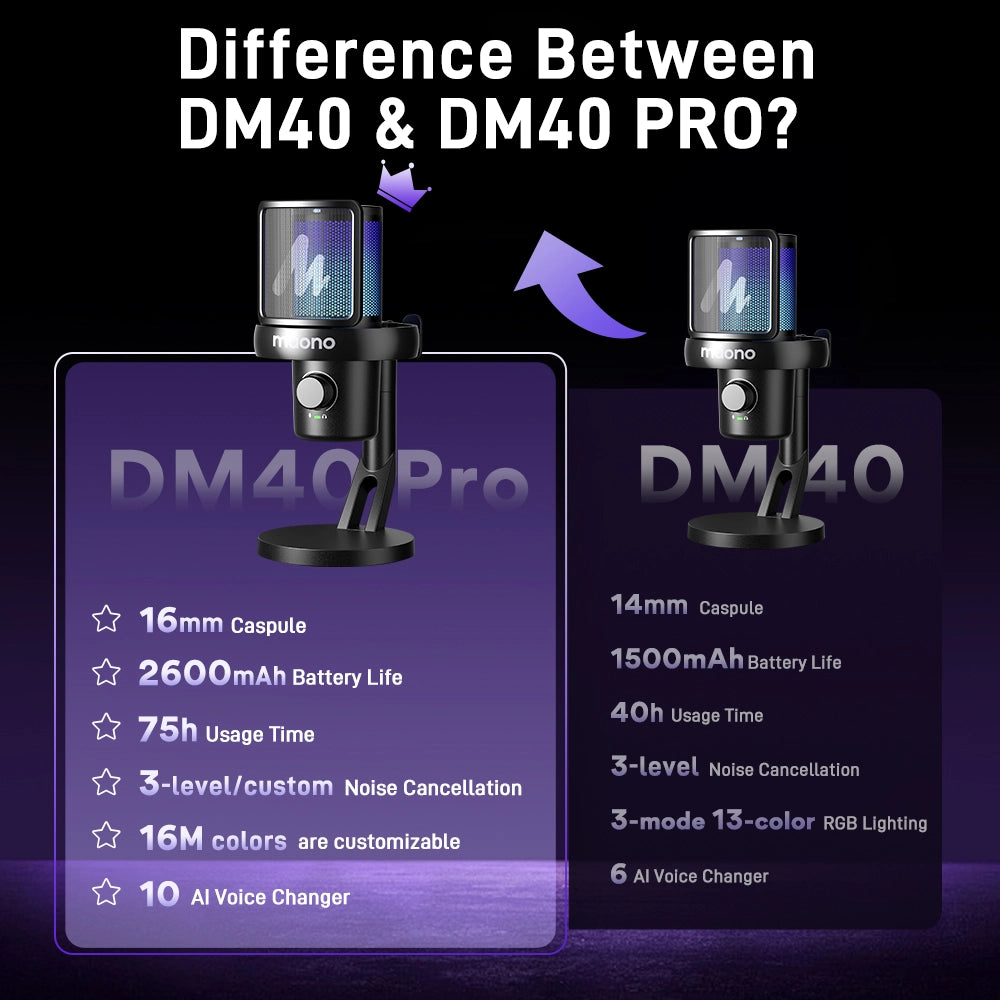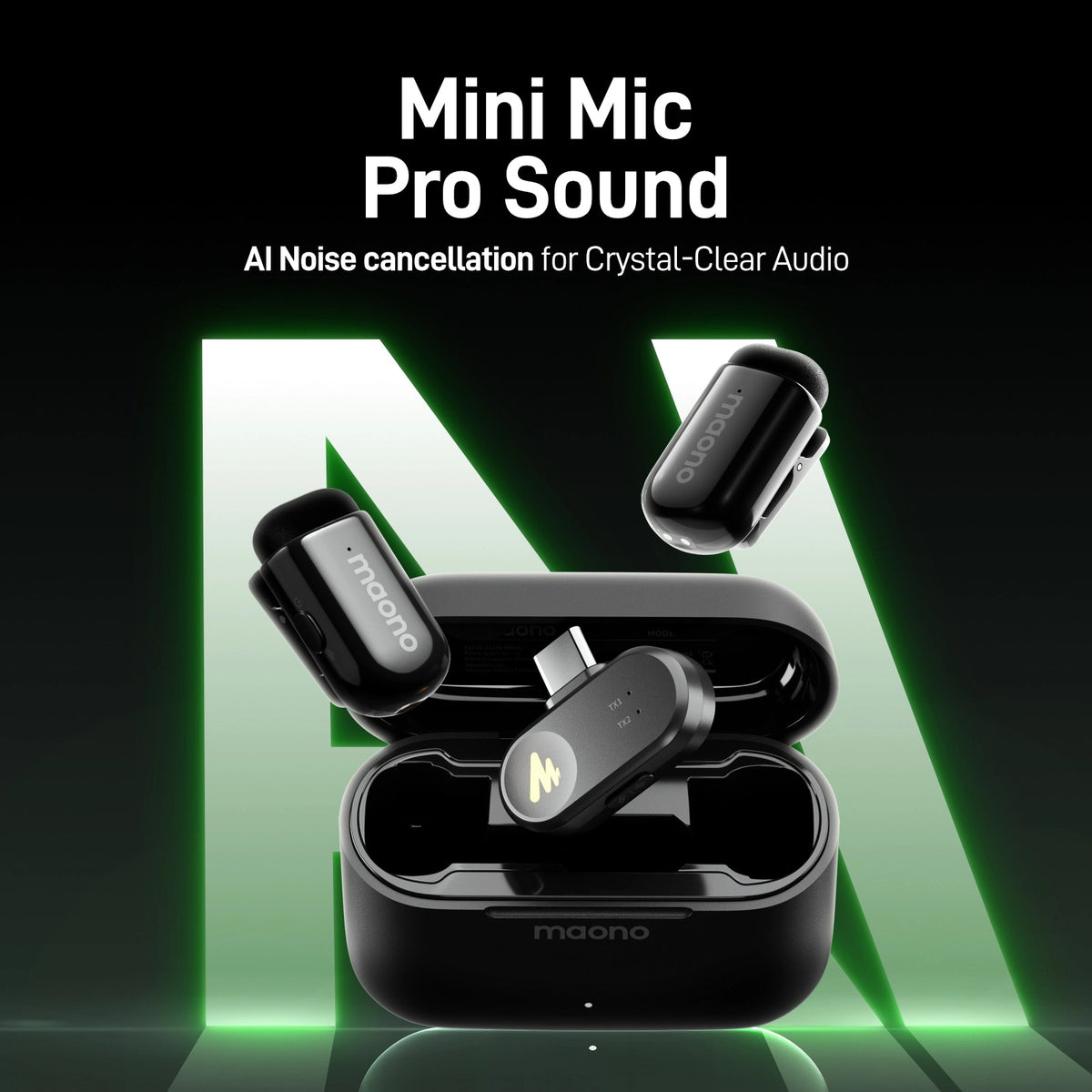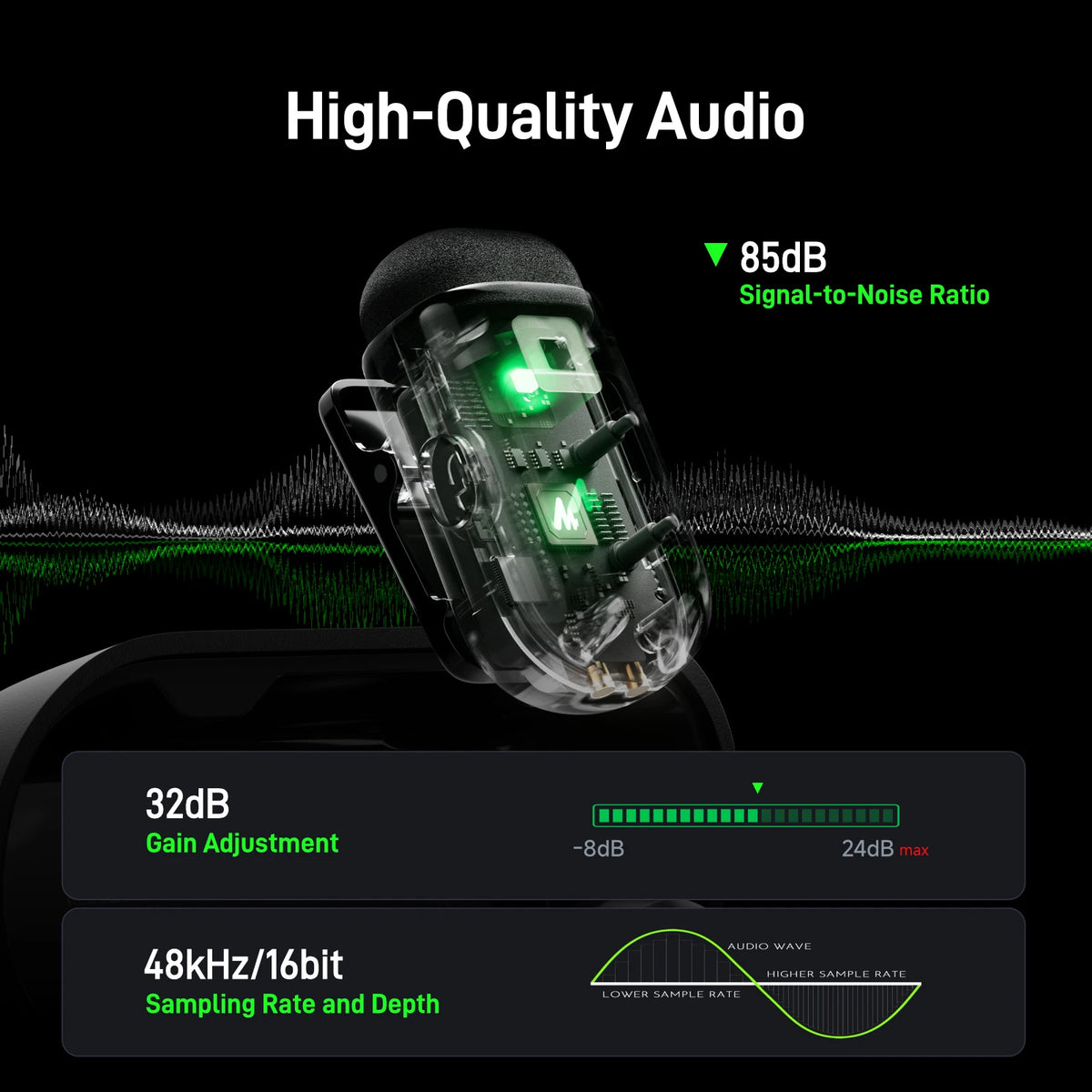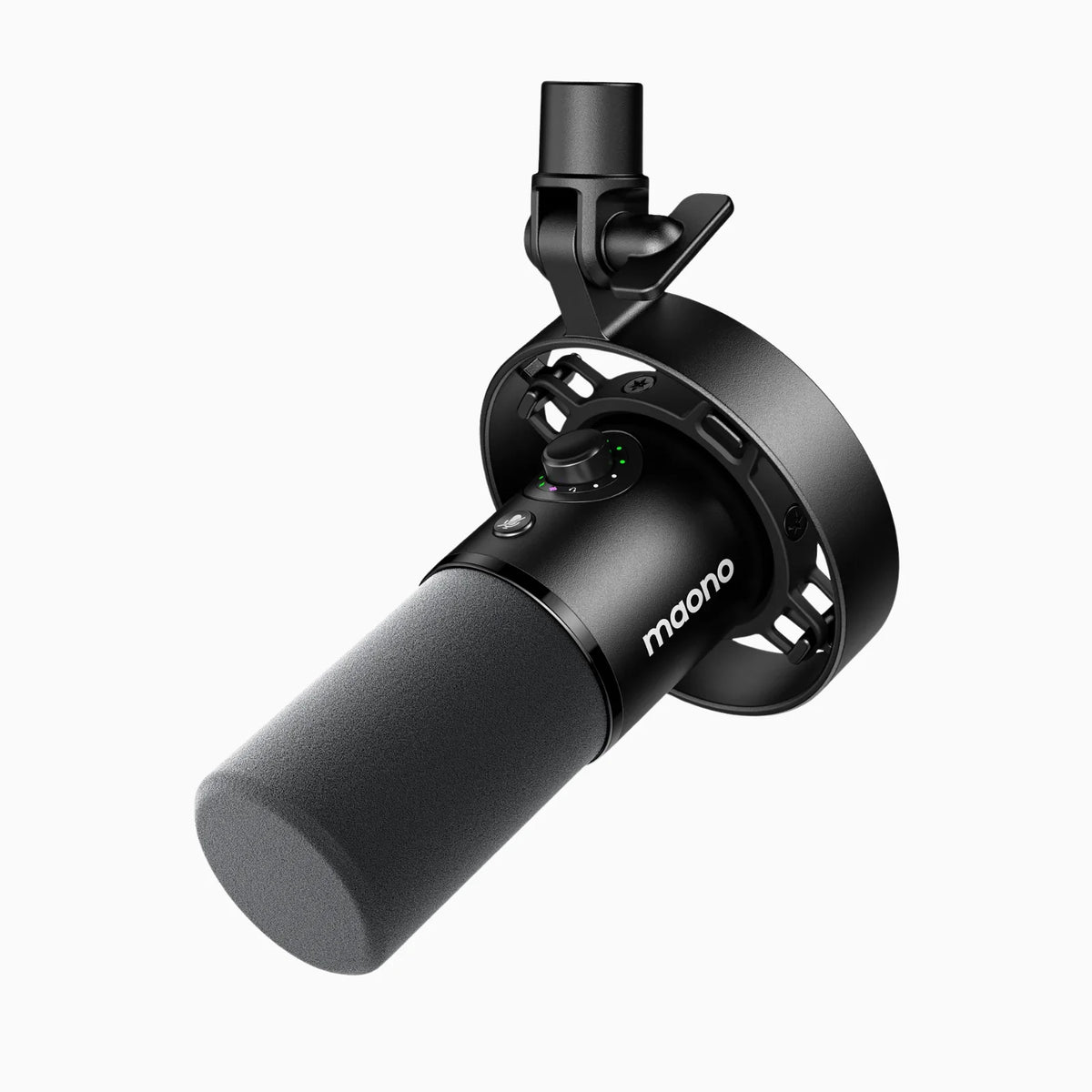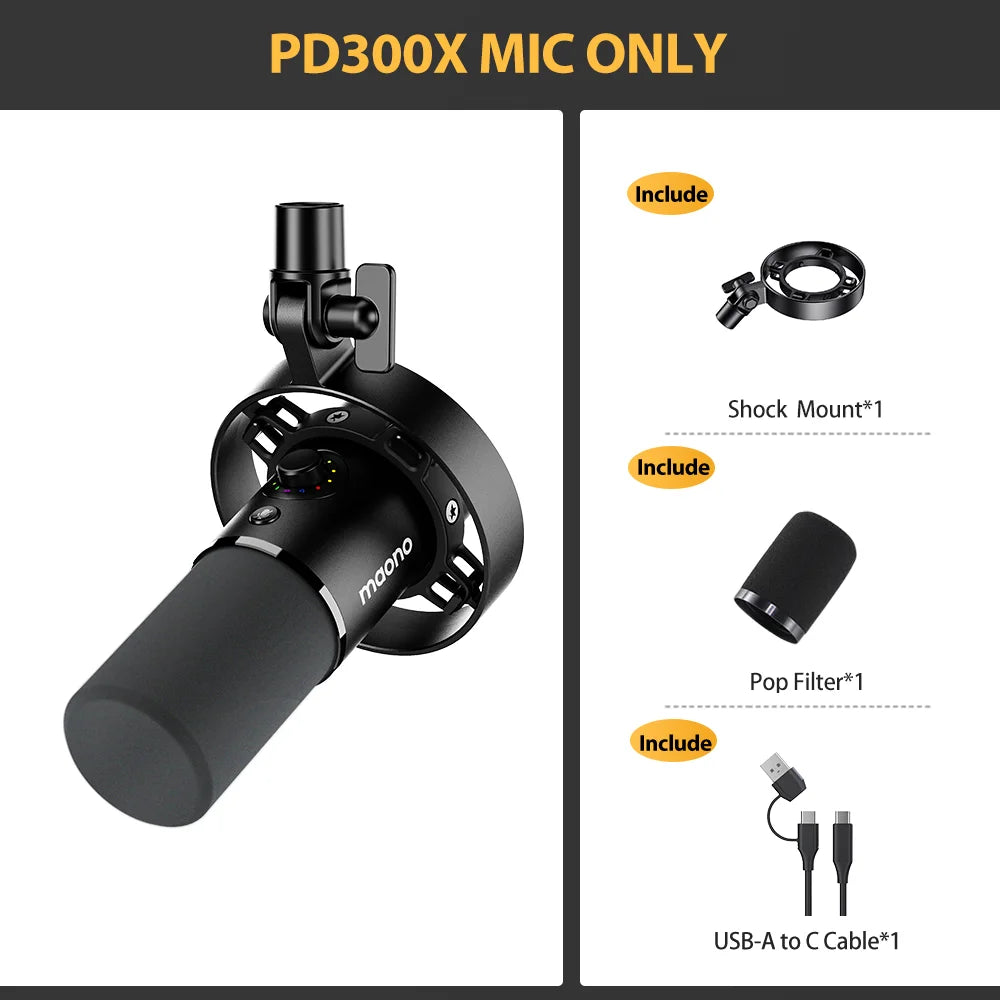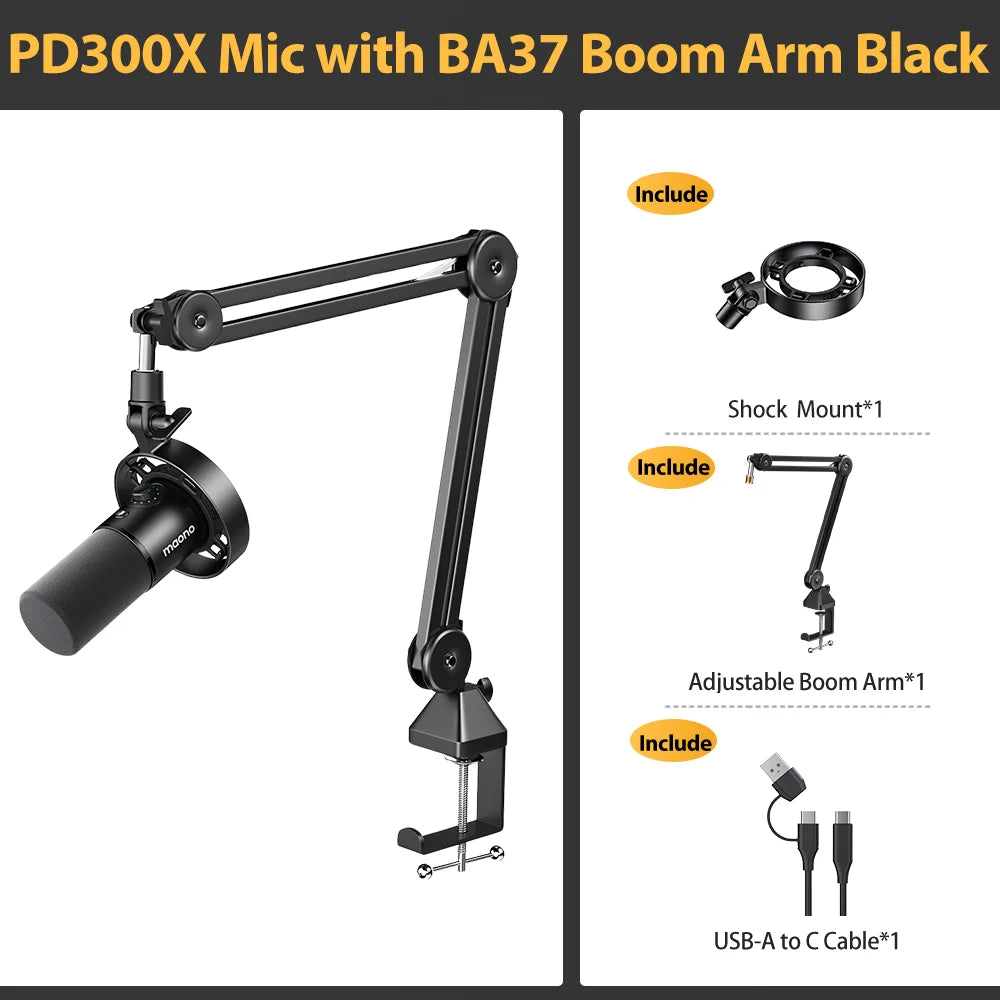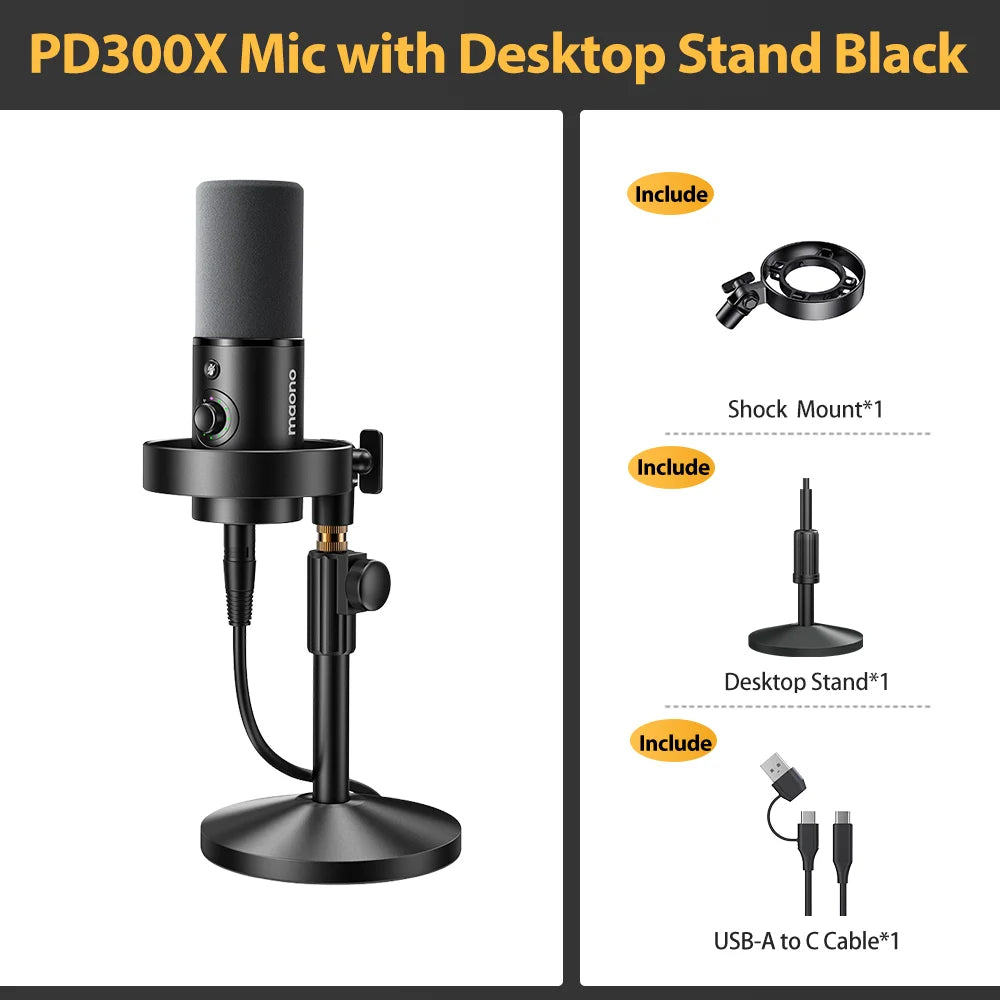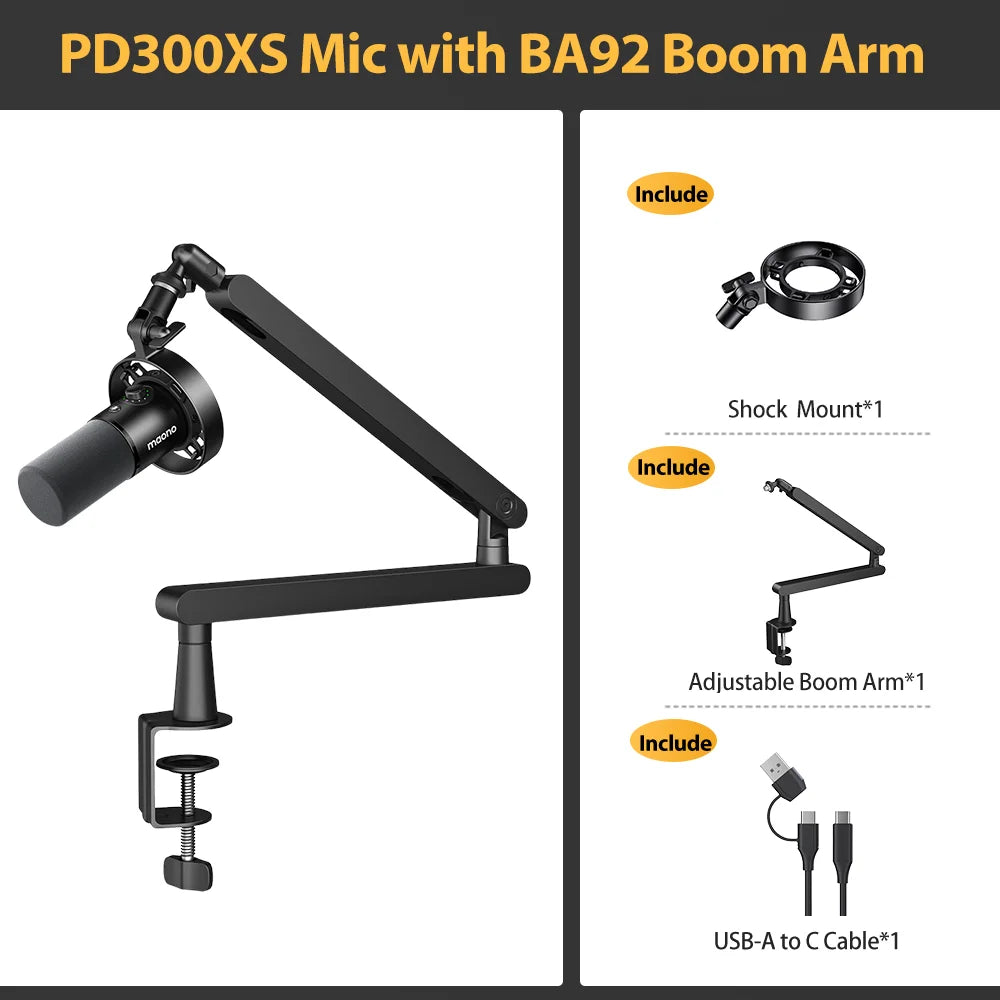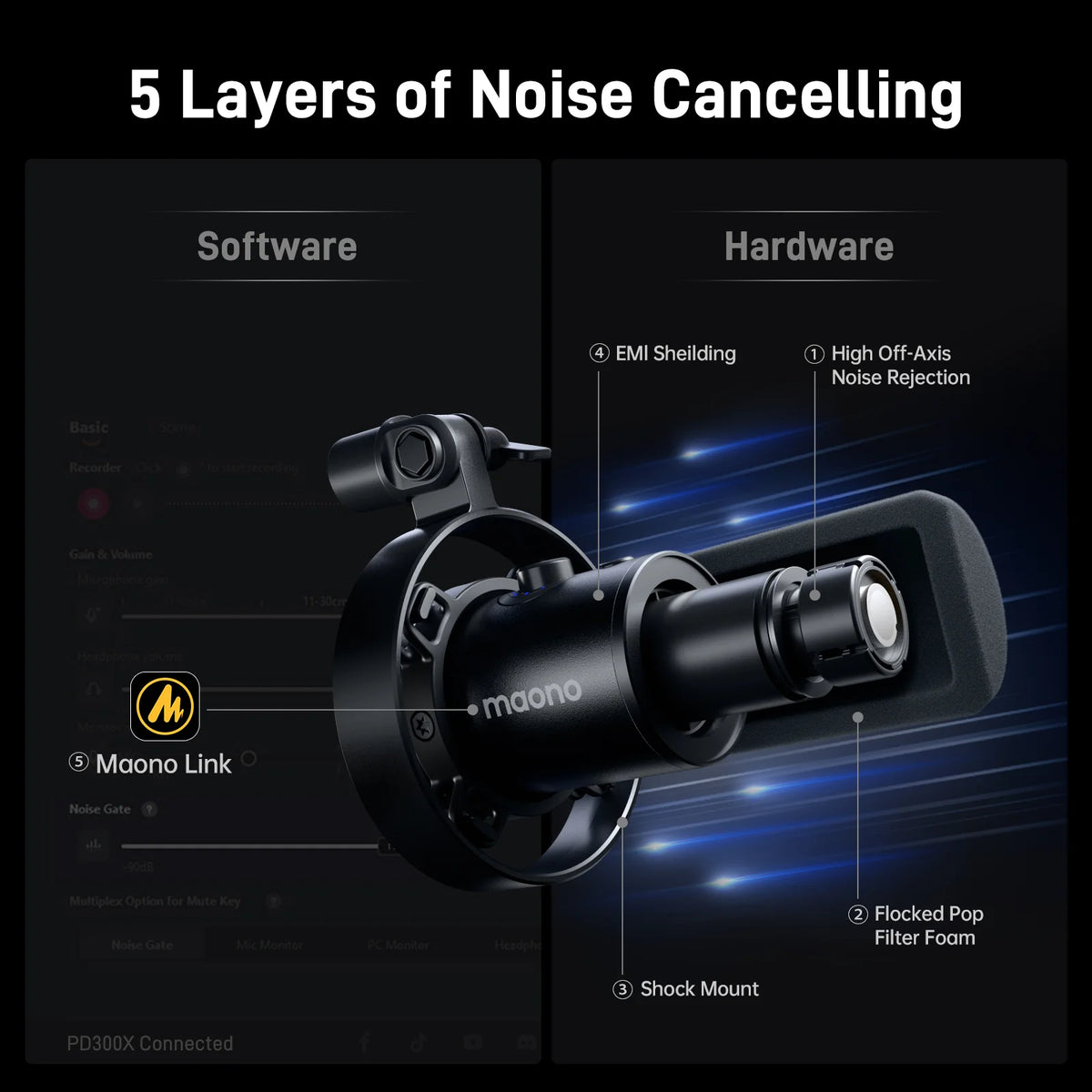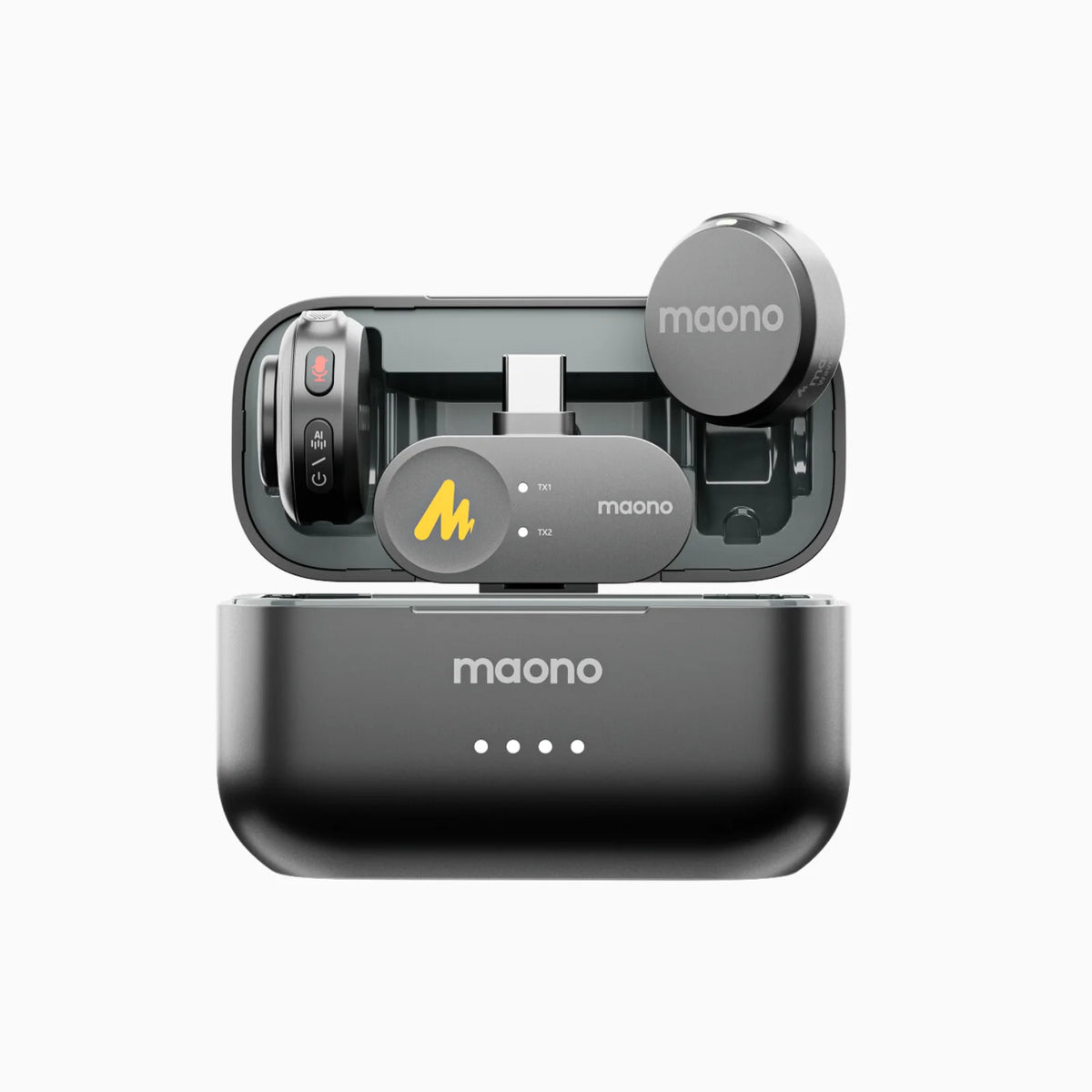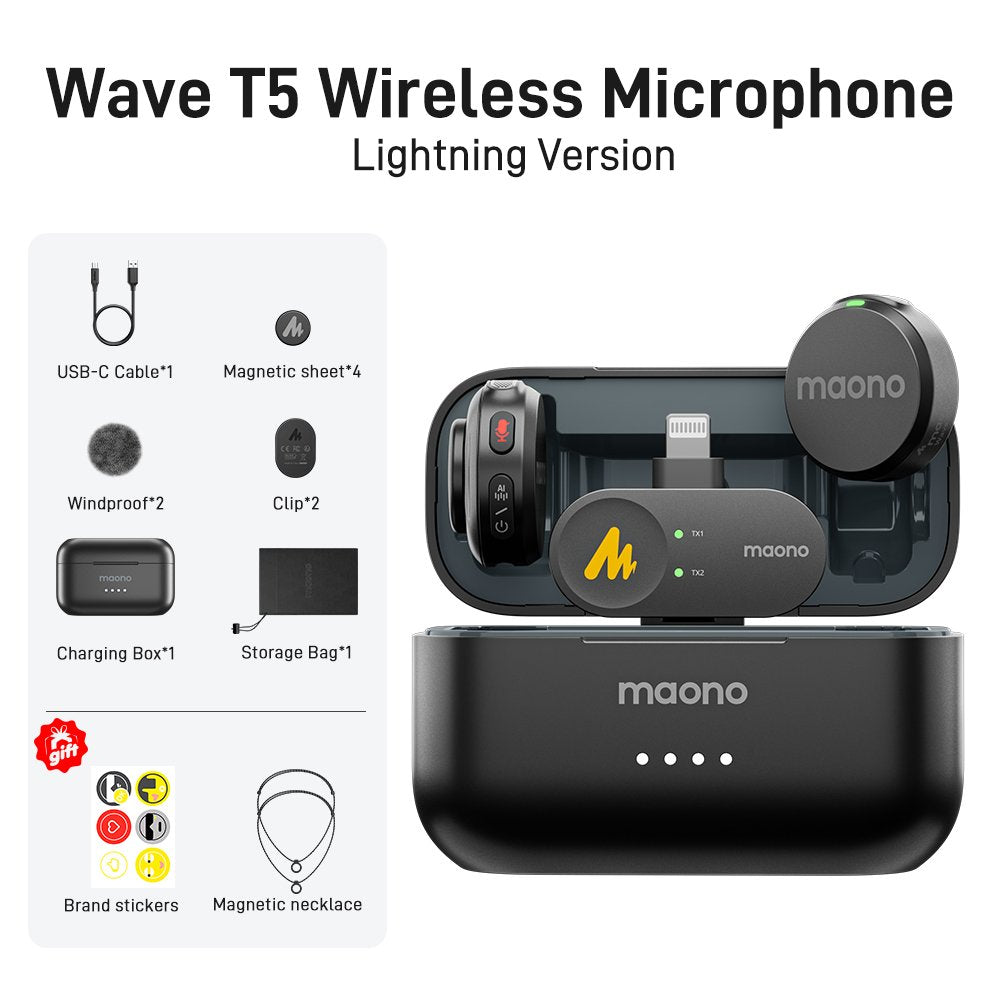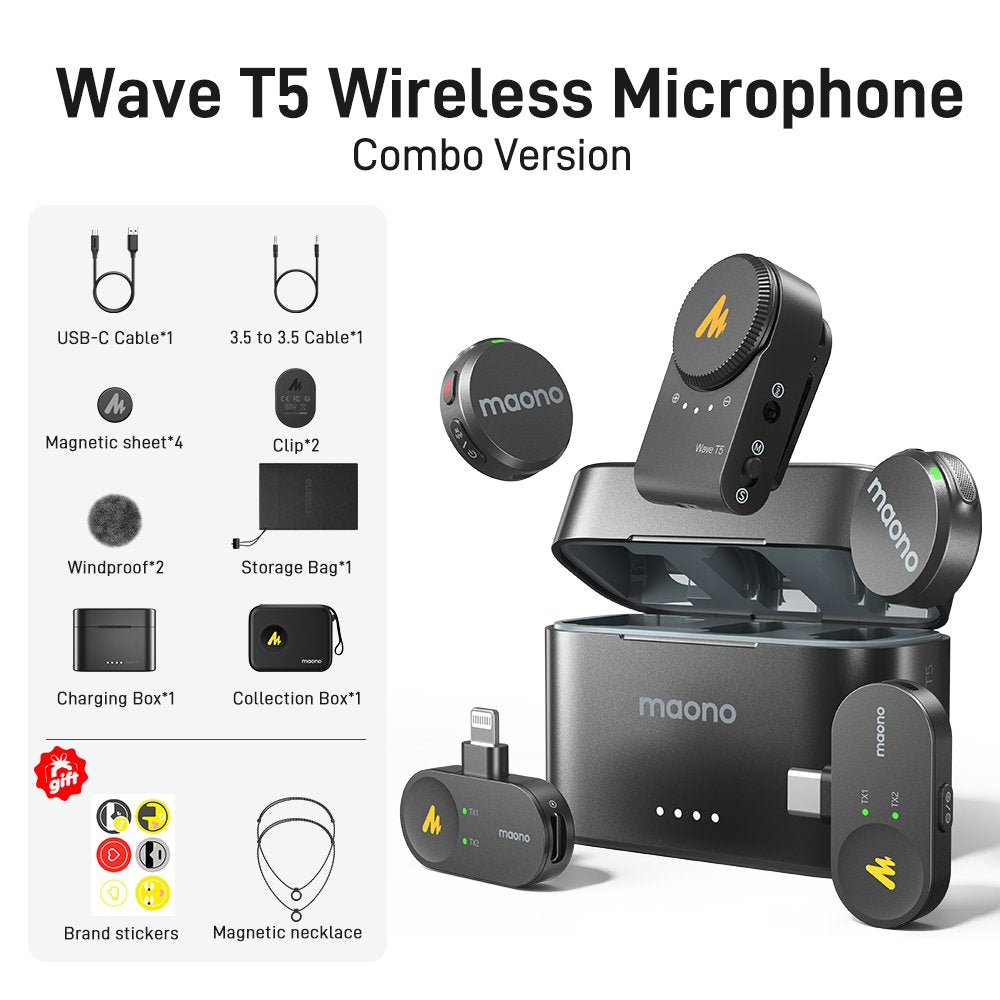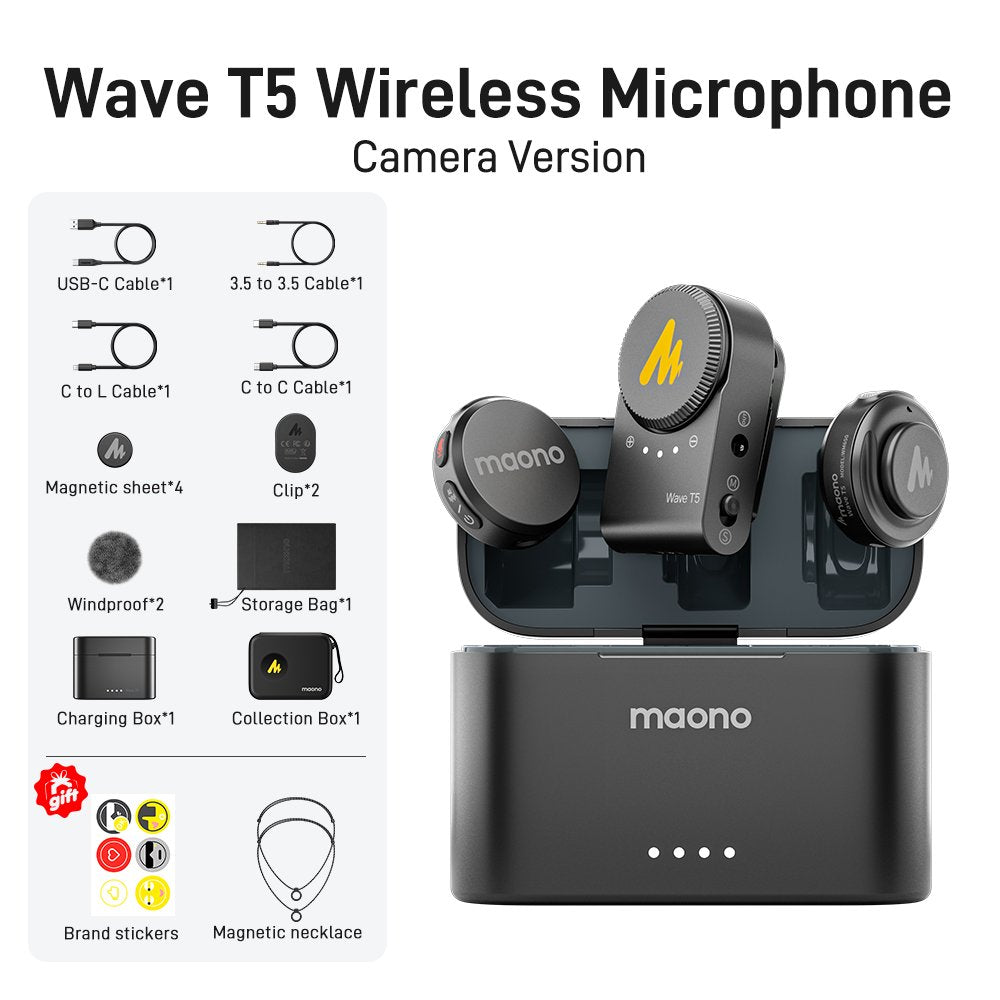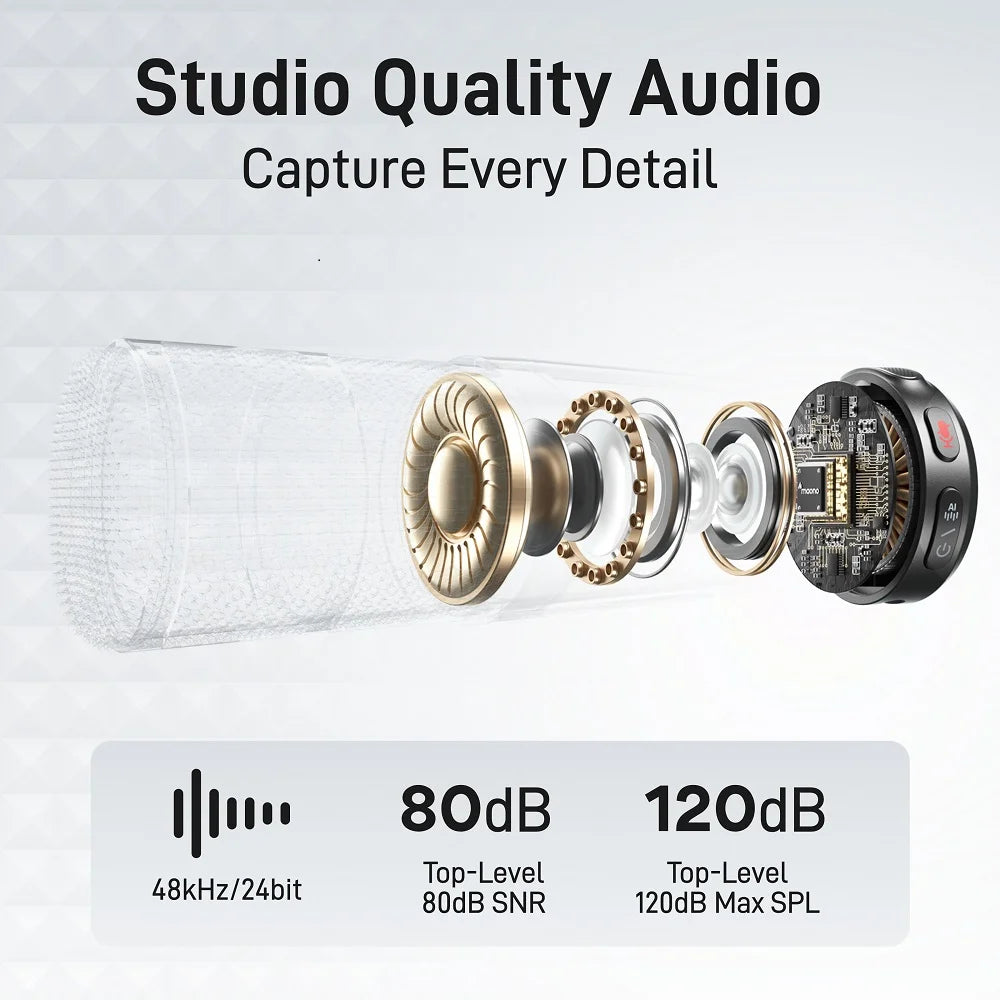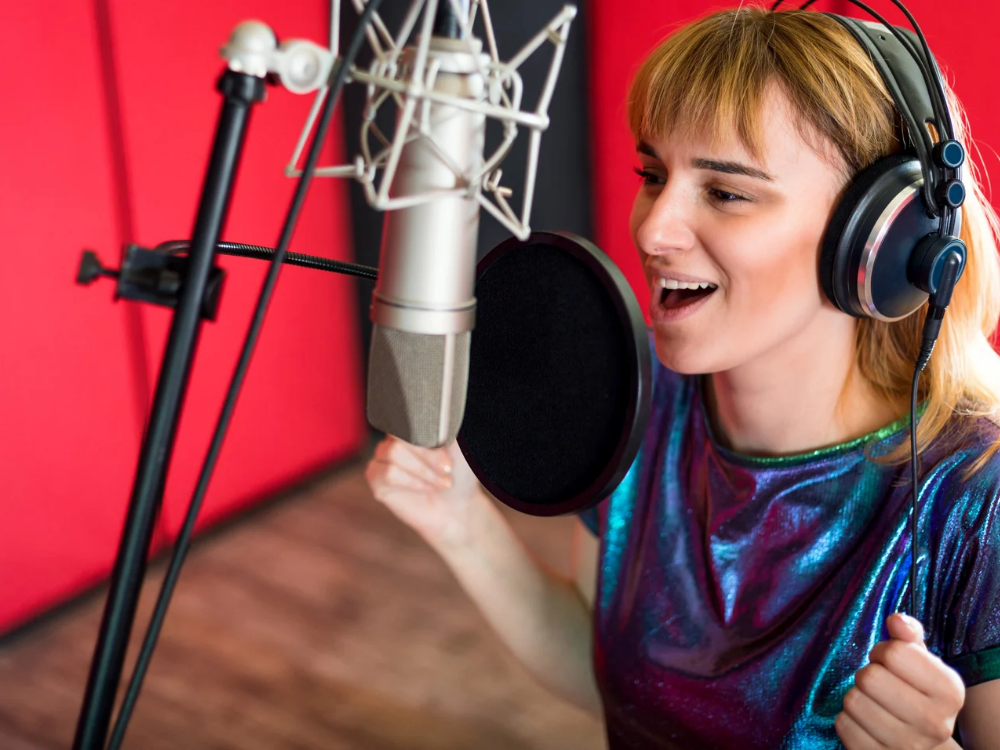Clear audio can make or break your recording, whether you're podcasting, singing, or streaming. But how do you ensure your microphone captures only the sound you want while cutting out the noise around you? That's where cardioid microphones come in. If you're wondering what is a cardioid microphone and why it's the go-to choice for professionals seeking crisp, focused sound, you're in the right place. Let’s dive into how these microphones work and why they’re essential for anyone serious about high-quality audio.
What is a polar pattern?
When choosing a microphone, one of the key factors to consider is the polar pattern, which determines how a microphone picks up sound from different directions. A polar pattern is essentially the sensitivity map of a microphone, illustrating the areas around the mic from which it captures sound and where it blocks or attenuates noise. The most common polar patterns include omnidirectional, bidirectional, and unidirectional.
Why is the microphone's polar pattern important?
The polar pattern of a microphone is crucial because it directly impacts how well the microphone can isolate the desired sound source from background noise. Depending on the recording environment and the specific use, such as recording vocals, instruments, or podcasts, different polar patterns are better suited for the task. Choosing the right polar pattern can make the difference between a clear, focused recording and one muddled with unwanted sounds.
What are cardioid patterns? What is a cardioid microphone?
The microphone cardioid polar pattern is heart-shaped (hence the name "cardioid"), meaning it picks up sound primarily from the front and attenuates sound from the sides and rear. Cardioid microphones are excellent for isolating the desired sound source while minimizing background noise, making them one of the most popular choices for vocal recordings, podcasts, and live performances.
A cardioid microphone is a unidirectional microphone that captures sound primarily from the front, making it ideal for use in environments where you want to focus on a single sound source while reducing unwanted ambient noise from the sides or back. This feature makes cardioid microphones a go-to option for various recording and broadcasting applications.
Cardioid Microphone Uses: What are cardioid microphones used for?
Cardioid microphones are widely used in various settings due to their focused sound capture and ability to minimize background noise. Here are some of the most common uses:
- Recording Vocals: Cardioid microphones are popular for vocal recording in studios because they pick up sound directly in front of the mic while reducing ambient noise from the sides and rear. This makes them ideal for music, podcasts, and voiceovers.
- Live Performances: During concerts or live events, cardioid microphones help capture the performer’s voice or instrument clearly without picking up crowd noise or feedback from other instruments.
- Podcasting: The cardioid pattern’s directional focus ensures that the speaker’s voice is recorded crisply, making it a favorite for podcast hosts and interview settings where minimizing environmental noise is critical.
- Streaming & Broadcasting: For live streamers and broadcasters, cardioid microphones allow them to capture their voice clearly while filtering out unwanted sounds, such as keyboard clicks or room ambiance.
- Instrument Recording: When used for acoustic guitars, drums, and other instruments, cardioid mics effectively capture the direct sound while avoiding bleeding from other instruments in the room.
- Field Recording: In noisy environments, cardioid microphones can focus on a specific sound source, making them useful for interviews or outdoor recordings where background noise is high.
Their versatility across different use cases stems from their ability to focus sound capture and reduce interference, ensuring clear and focused audio quality.
How do Microphone Polar Patterns Work?
Microphone polar patterns function by using various internal designs that shape how sound is captured. In the case of a cardioid microphone, the design typically includes a diaphragm that responds more sensitively to sounds in front of the microphone while reducing sensitivity to sounds from the rear and sides. This directional focus is achieved by controlling the air pressure changes around the diaphragm to create the heart-shaped sensitivity field.
Can you use a cardioid microphone with a smartphone or a tablet?
Yes, cardioid microphones can be used with smartphones or tablets. Many cardioid microphones now come with USB or 3.5mm connections, making them compatible with mobile devices. Some models may require an adapter, such as a USB-C or Lightning converter, depending on your device. The portability and versatility of modern cardioid microphones make them a great option for mobile recording, podcasts and live streaming on the go.
Best Cardioid Microphones for Clear Sound in 2024
Here’s a roundup of five top-performing cardioid microphones, including two standout models from Maono. Each of these microphones offers exceptional sound quality, focusing on clear audio capture for various uses.
1. Shure SM7B
The Shure SM7B is a legendary dynamic cardioid microphone that delivers exceptional vocal clarity. Its smooth, flat frequency response and ability to handle high sound pressure levels (SPL) make it a favorite for podcasters, musicians, and voice-over artists. The cardioid pattern ensures background noise is minimized, providing focused sound capture.
- Type: Dynamic cardioid
- Frequency Response: 50 Hz – 20 kHz
- Notable Features: Built-in air suspension shock isolation, excellent for professional vocal recordings
- Pros: Exceptional noise isolation, rugged build
- Cons: Requires a powerful preamp for best results
- Price: Around $399
2. Audio-Technica AT2020
The Audio-Technica AT2020 is a widely acclaimed condenser cardioid microphone ideal for both vocal and instrument recordings. Its wide frequency response and excellent transient response make it suitable for studio environments.
- Type: Condenser cardioid
- Frequency Response: 20 Hz – 20 kHz
- Notable Features: High SPL handling, low self-noise
- Pros: Affordable, versatile, durable
- Cons: Lacks a shock mount
- Price: Around $99
3. Maono PM360

The Maono PM360 is a professional cardioid condenser microphone that offers a broad frequency response of 30Hz to 16kHz, making it suitable for capturing vocals and instruments with clarity. Its cardioid polar pattern ensures focused sound pickup from the front, reducing ambient noise from the sides and rear.
- Type: XLR Condenser cardioid
- Frequency Response: 30 Hz – 16 kHz
- Notable Features: Plug-and-play, Cardioid polar pattern for noise isolation.
- Wide frequency response for versatile audio capture.
- XLR-to-3.5mm cable included for flexible connectivity.
- Easy plug-and-play setup with XLR-to-3.5mm cable
- Lightweight and portable design.
- Suitable for voice recording and streaming
- Affordable, high-quality sound, easy to use
- Cons: Requires an additional power source like an audio interface or sound card.
- Price: Around $36.99
4. Rode NT1-A
The Rode NT1-A is known for its extremely low self-noise (5dBA), making it one of the quietest condenser cardioid microphones available. This makes it an excellent choice for recording subtle vocals or acoustic instruments where detail and nuance are critical.
- Type: Condenser cardioid
- Frequency Response: 20 Hz – 20 kHz
- Notable Features: Ultra-low self-noise, high sensitivity
- Pros: Crystal-clear audio, sturdy build
- Cons: Requires phantom power
- Price: Around $229
5. Maono PM325

The Maono PM325 is a cardioid studio condenser microphone with a frequency response of 30Hz to 16kHz, designed for clear and focused sound capture while minimizing background noise. Its cardioid polar pattern helps isolate the main sound source, making it ideal for podcasts, voiceovers, and streaming setups.
- Type: Condenser cardioid
- Frequency Response: 20 Hz – 20 kHz
- Notable Features: Plug-and-play with XLR connectivity, Compact and portable design with a desktop stand.
- Simple plug-and-play setup with 3.5mm connectivity.
- Ideal for beginners looking for an affordable, reliable microphone.
- Pros: Affordable, Cardioid pattern for excellent sound isolation.
- Includes a desktop stand for convenient use.
- Affordable entry-level option for casual recording needs.
- Cons: Limited frequency response may not capture deep bass tones well.
- Price: Around $69.99
FAQs
1. How does the frequency response of a Maono cardioid microphone affect recording quality?
The frequency response of a Maono cardioid microphone, such as the PM325, plays a critical role in determining the clarity and richness of the sound it captures. A wider frequency response, like 20 Hz – 20 kHz, ensures that the microphone can capture both low and high-frequency sounds with precision. This is particularly important for vocal recordings, where capturing the full range of the human voice—from the deep bass tones to high-pitched notes—is essential for delivering high-quality recordings.
2. How do Maono cardioid microphones handle different vocal ranges and tones?
Maono cardioid microphones, like the Maono A04 for instance, are designed to handle a variety of vocal ranges and tones effectively. The cardioid pattern allows the microphone to focus on the voice directly in front of it while rejecting background noise. This makes it easier to capture the subtle nuances in different vocal ranges, whether you're recording a deep baritone voice or a high soprano. The condenser design ensures that even the most delicate vocal performances are recorded with clarity and detail.
3. How does the cardioid pattern of Maono microphones improve sound capture in noisy environments?
The cardioid pattern of Maono microphones, such as the P360, helps in noisy environments by focusing on sound sources directly in front of the microphone while minimizing the capture of sound from the sides and rear. This directional focus reduces the impact of background noise, such as keyboard clicks, room reverb, or other distractions. As a result, the main sound source remains clear and isolated, making Maono cardioid microphones ideal for podcasting, streaming, and voice-over work in less-than-ideal acoustic conditions.
Conclusion
Cardioid microphones are a top choice for anyone looking to achieve clear, focused sound. Whether you're recording vocals, instruments, or podcasting, a cardioid pattern helps isolate the sound source while minimizing background noise, leading to professional-grade recordings. The five best cardioid microphones we've explored, including top models from Maono, offer a range of options suitable for different needs and budgets. With the right microphone, you can ensure that your recordings are crisp, clear, and free from unwanted noise, whether you're in a professional studio or a home setup.










